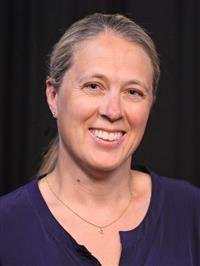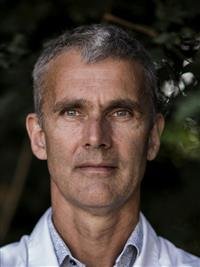Invited Speakers

Daniel Soule
Pre-conference workshop leader from the Professional Writing Academy in the UK
Writers here
Info
Content here
Keywords:
Keywords here
References:
- References here

Johannes Kabisch
Group leader of Kabisch Lab, specializing in computer-aided synthetic biology, at TU Darmstadt and NTNU
Johannes Kabisch1, Benedict Spannenkrebs2, Silke Hackenschmidt2, Thomas Zoll3, Niels Schlichting4, Marianna Karava5, Peter Gockel6 Darius Zibulski2, Stefan Bruder2, Aron Eiermann2
1 Department of Biotechnology and Food Science NTNU, 2 Computer-aided Synthetic Biology TU Darmstadt, Affiliation, 3 Hamilton Robotics AG, 4 Agilent Technologies, 5 Institute of Molecular Biotechnology, Graz University of Technology, 6 DTU
Microbial biotechnology offers novel solutions for some of the problems our society faces today, such as depletion of resources, pollution and lack of sustainability. One means to tackling these issues this is through the creation of microbial cell factories. As there are currently no first principles to guide such biological engineering approaches, automation and rapid prototyping enable a more effictive construction. We will present short glimpses into several scales of automation, from a room-filling robotics platform with active learning capabilities (publication in prep), via a cell-free rapid prototyping platform, enabling going from DNA parts to screened protein within a single day[1], down to a simple pipetting aid[2] using tablets.
In the second part we will present work about two of our biological platforms: Display-Kit consists of genetically optimized Bacillus subtilis cells allowing us to easily produce and immobilize proteins on the surface of bacterial spores [3,4]. Our Eternal Cells, the second platform, are bacterial cells in which we inducibly remove the origin of replication, taking away one of the characteristics of life, namely their ability to reproduce. We hope to one day scale these cell factories into the ultimate production platform, which only produces, but does not reproduce.
References:
- HyperXpress: Rapid Single Vessel DNA Assembly and Protein Production in Microliterscale, Darius Zibulski, Niels Schlichting, Johannes Kabisch, 2022, Front. Bioeng. Biotechnol. 10.3389/fbioe.2022.832176
- [2] Pipette Show: An Open Source Web Application to Support Pipetting into Microplates, Johannes Falk, Marc Mendler, Johannes Kabisch, 2022, ACS Synth. Biology 10.1021/acssynbio.1c00494
- [3] Quantification and Isolation of Bacillus subtilis Spores using Cell Sorting and automated Gating, Marianna Karava, Felix Bracharz, Johannes Kabisch, 2019, PLOS ONE. 10.1371/journal.pone.0219892
- [4] Bacillus subtilis spore surface display of photodecarboxylase for the transformation of lipids to hydrocarbons Marianna Karava, Peter Gockel, Johannes Kabisch, 2021, Sustainable Energy & Fuels 10.1039/D0SE01404D

Jane Wittrup Agger
From the Enzymatic Bioconversion and Analytics group at DTU
Jane Wittrup Agger1
1 Department of Biotechnology and Biomedicine, Technical University of Denmark, Lyngby, Denmark
Lignin from lignocellulose is a renewable plant-based resource with enormous potential for sustainable and green production of specialized materials; materials which are currently based on fossil resources. The selective extraction of chemically intact lignin is significantly challenged by the recalcitrance and rigidity of lignocellulose. It is generally recognized that it is the overall tight and dense composition of the plant cell wall that causes the recalcitrance, where the intertwining network between lignin and polysaccharides creates a stable matrix. Covalent linkages between lignin and hemicellulose, the so-called Lignin-Carbohydrate Complexes (LCCs) play a significant role in upholding the assembly between lignin and hemicellulose. We here describe the successful characterization of how a glucuronoyl esterases (CE15) from Cerrena unicolor catalyse the hydrolysis of ester-linked LCCs. The activity of this particular enzyme facilitates the breakage of those interpolymeric bonds between lignin and polysaccharides that participate in maintaining lignocellulose recalcitrance. We demonstrate and characterize product release from natural birchwood, and link the catalytic function of the enzyme to it structural features and look into enzyme diversity 1–3.
References:
- Mosbech, C., Holck, J., Meyer, A. S. & Agger, J. W. Biotechnol. Biofuels 11, 1–9 (2018).
- Mosbech, C., Holck, J., Meyer, A. & Agger, J. W. Appl. Microbiol. Biotechnol. 103, 4065–4075 (2019).
- Ernst, H. A. et al. Nat. Commun. 11, 1–12 (2020).

Peter Westh
Group leader in Interfacial Enzymology at DTU
Peter Westh1
1 Department of Biotechnology and Biomedicine, Technical University of Denmark, Lyngby, Denmark
Broader use of biocatalysis is a key tool for our transition towards more sustainable industries. This is because enzymes offer a combination of high specificity and catalytic efficiency on one hand and a low environmental footprint on the other. Newly launched industrial enzymes are often wild types with desirable phenotypical properties, but unnatural conditions, substrates, inhibitors etc. that are characteristic for the industrial process creates a continuous need to engineer enzyme variants that perform better. Rational approaches to this engineering require detailed insights into structure-function relationships, and this presentation will focus on this aspect for enzymes that modify insoluble substrate. This type of process – so-called heterogeneous enzyme reactions – makes up a dominant class within industrial biocatalysis, and its limitation to an interfacial means that is not always well described by the principles and practices used within conventional (bulk) enzymology. We will discuss how kinetic data for heterogeneous enzyme reactions can be retrieved, critically analyzed, and combined with structural information in attempts to design enzyme variants that are more efficient under industrial conditions. The presentation will mainly use examples taken from enzymatic deconstruction of lignocellulosic biomass or plastic waste.

